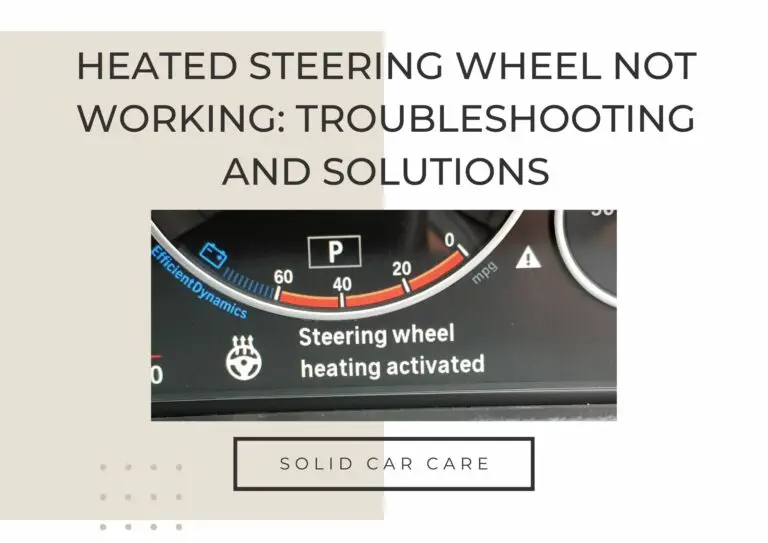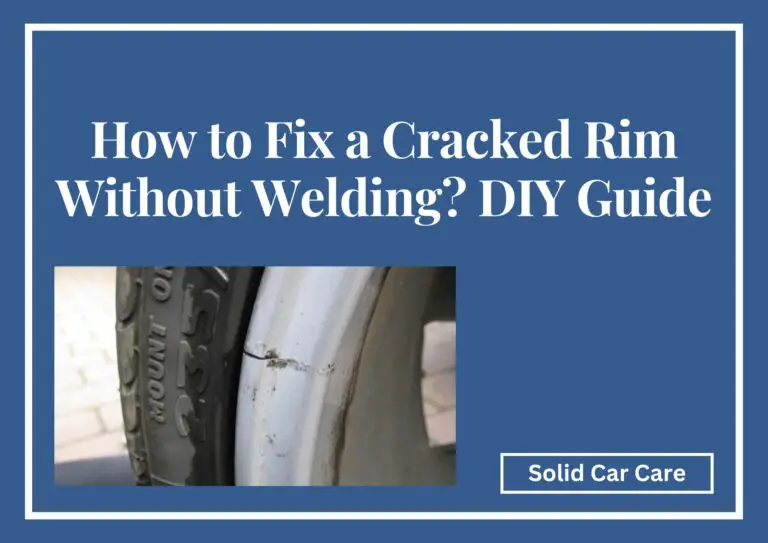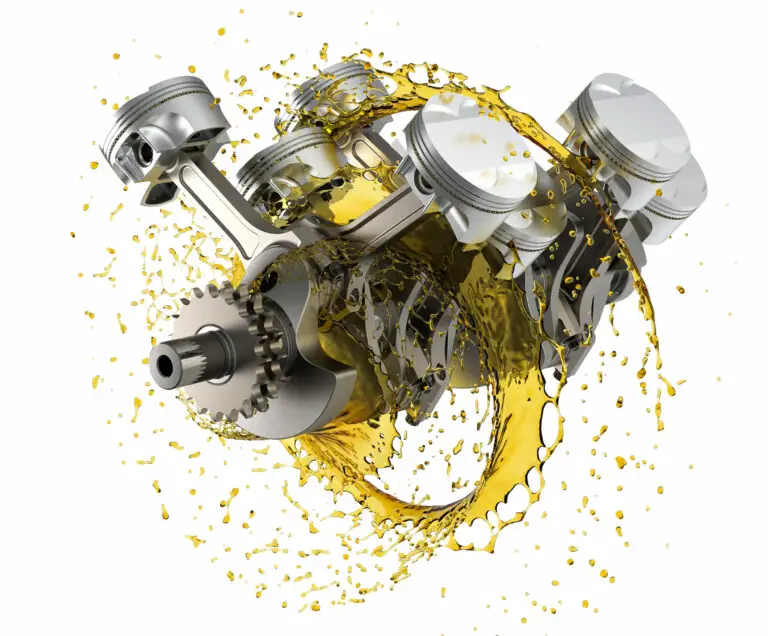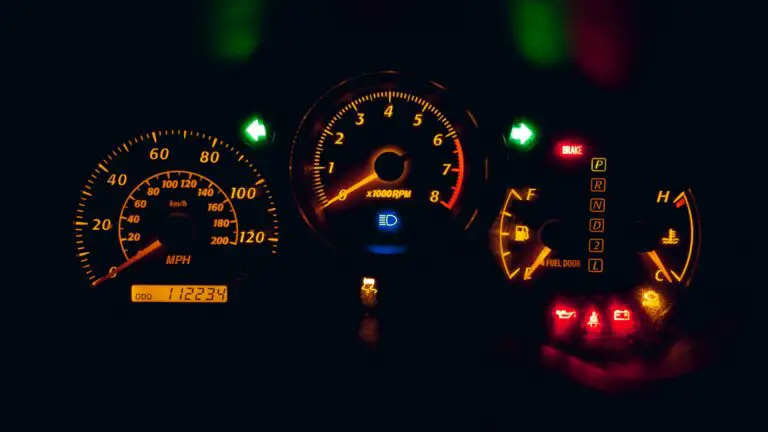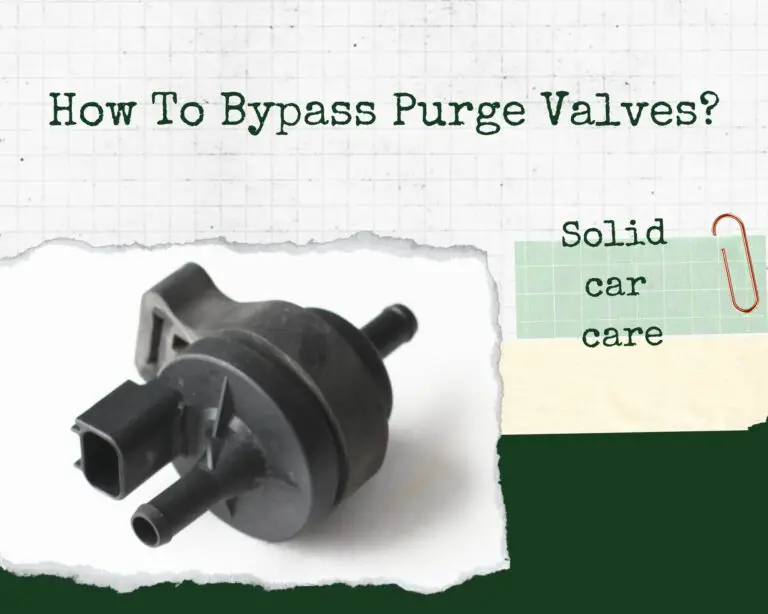How Long Can You Drive With Bad Valve Seals? Must Read
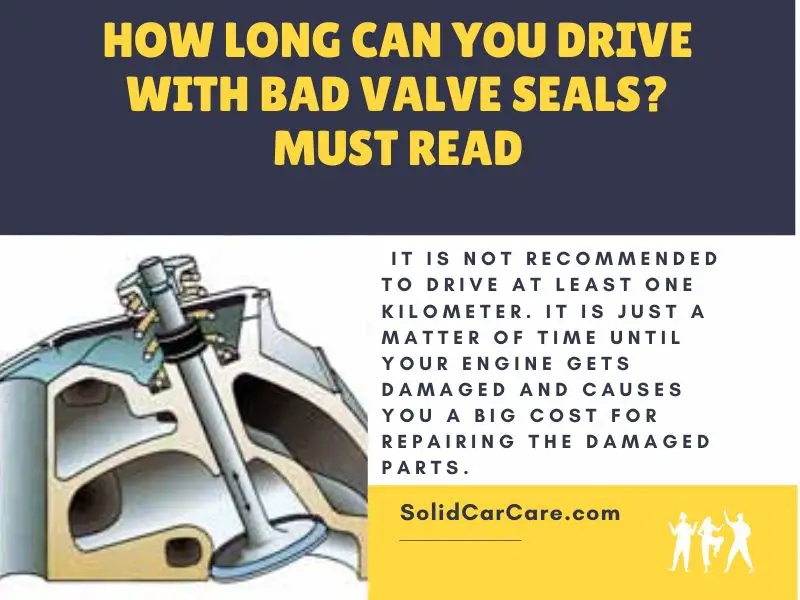
Have you been experiencing some subtle issues with your car lately? You may have noticed a slight increase in oil consumption or a faint bluish smoke coming from the exhaust. Perhaps your car’s idle has become a bit rougher than usual. These seemingly insignificant symptoms could be signaling a problem with your valve seals.
But here’s the million-dollar question: how long can you continue driving with bad valve seals? Well, buckle up and prepare to discover the answer, because it’s not as straightforward as you might think.
Key Takeaways
- The length of time you can drive with bad valve seals varies depending on the severity of the damage, driving conditions, and the type of vehicle.
- Symptoms of bad valve seals may include excessive oil consumption, blue smoke from the exhaust, rough idle or misfiring, and engine knocking.
- Ignoring leaking valve seals can lead to increased engine wear, catalytic converter damage, and even engine seizure.
- It is recommended to address the issue as soon as possible by taking your car to a qualified mechanic to prevent further damage and costly repairs. Driving with bad valve seals puts your engine at risk and increases the risk of breakdowns and potential danger on the road.
Factors Affecting Driving With Bad Valve Seals
When it comes to driving with bad valve seals, there are several factors that can affect your ability to continue driving.
The severity of the damage plays a significant role, as minor leaks may allow for continued driving while severe leaks can cause rapid engine damage.
Additionally, driving conditions, such as frequent acceleration and high speeds, can worsen the leak, and different vehicle types have varying tolerances for worn parts and oil consumption.
Severity Of The Damage
Leaky valve seals can vary in severity, ranging from minor wear to complete failure, which will determine the impact on driving with bad valve seals. Factors affecting the severity of the damage include the impact on engine performance, potential costs of repair, consequences of delaying repairs, common causes of valve seal damage, and signs of worsening valve seal condition.
Here are the key points to consider:
- Impact on engine performance:
- Minor leaks may not have a significant impact initially, while severe leaks can lead to reduced power, decreased fuel efficiency, and potential engine misfires.
- Potential costs of repair:
- The cost of repairing or replacing valve seals can vary depending on the extent of the damage and the specific vehicle model. In some cases, it may require a complete engine overhaul.
- Consequences of delaying repairs:
- Ignoring valve seal issues can lead to increased oil consumption, engine damage, catalytic converter damage, and even engine seizure.
- Common causes of valve seal damage:
- Age, wear and tear, poor maintenance, and low-quality engine oil are common causes of valve seal damage.
- Signs of worsening valve seal condition:
- Look out for excessive oil consumption, blue smoke from the exhaust, rough idle or misfiring, and engine knocking as signs that the valve seals are worsening.
It is crucial to address valve seal issues promptly to prevent further damage and costly repairs.
Driving Conditions
Driving with bad valve seals can have varying effects on your vehicle depending on the conditions in which you drive. Factors such as temperature, driving habits, and vehicle type can impact the performance and longevity of your engine. Here is a table highlighting some of the key factors affecting driving with bad valve seals:
| Factors | Effect on Vehicle |
|---|---|
| Temperature | Extreme heat can worsen oil leakage |
| Fuel efficiency | Decreased efficiency due to oil consumption |
| Engine performance | Reduced power, misfires, and rough idling |
| Maintenance tips | Regular oil changes, proper engine maintenance |
| Common causes | Age, wear and tear, lack of maintenance |
To mitigate the effects of bad valve seals, it is important to follow maintenance tips such as regular oil changes and proper engine maintenance. Additionally, being mindful of driving habits and avoiding excessive acceleration or high speeds can help minimize the impact on fuel efficiency and engine performance.
Vehicle Type
Different vehicle types have varying tolerances for worn parts and oil consumption, which can affect the performance and longevity of the engine when driving with bad valve seals. Here are some key factors to consider regarding vehicle type and its impact on driving with bad valve seals:
- Engine compatibility: Certain engines may be more prone to oil consumption or have a higher tolerance for worn parts, potentially allowing them to handle leaking valve seals better than others.
- Oil consumption: Some vehicle types may have a higher tolerance for oil consumption, mitigating the negative effects of leaking valve seals to some extent.
- Performance impact: The performance of your vehicle may be affected differently depending on its type and the severity of the valve seal damage.
- Repair options: The availability of repair options, as well as their costs, may vary depending on the vehicle type, potentially affecting the decision-making process.
Considering these factors, it’s important to consult with a qualified mechanic to understand the specific impact of bad valve seals on your vehicle type and explore the most suitable repair options to maintain the performance and longevity of your engine.
Symptoms of Bad Valve Seals
When it comes to bad valve seals, there are several symptoms that you should be aware of.
Excessive oil consumption is a common sign, as you may find yourself needing to add oil more frequently than usual.
Another indicator is blue smoke coming from the exhaust, which indicates oil burning in the cylinders.
Additionally, rough idle or misfiring, as well as engine knocking, can also point to faulty valve seals.
It’s important to recognize these symptoms and address the issue promptly to prevent further damage to your engine.
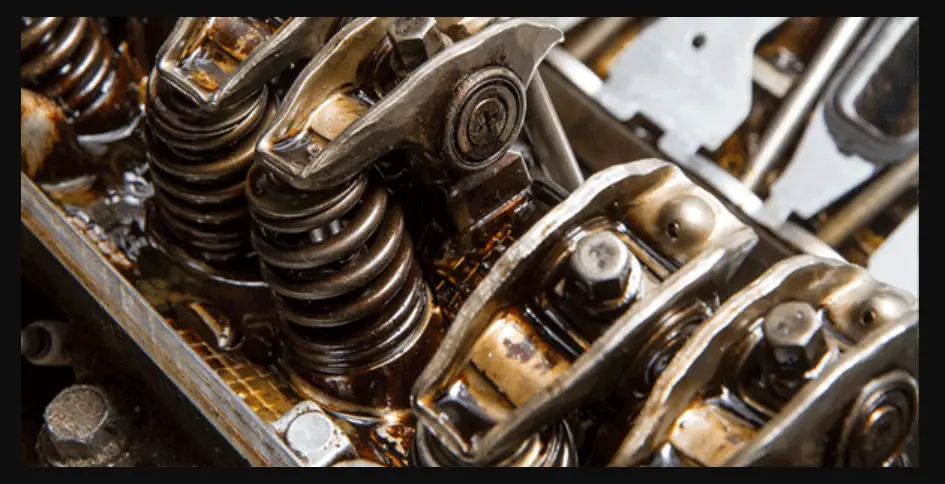
Excessive Oil Consumption
Excessive oil consumption is one of the key symptoms indicating the presence of bad valve seals. Understanding the causes, effects, diagnosis, prevention, and treatment options for excessive oil consumption can help you address this issue effectively.
Causes of excessive oil consumption:
- Worn valve seals: Over time, the seals can deteriorate, leading to oil leakage.
- Engine wear: A worn engine can cause increased oil consumption as the piston rings lose their ability to properly seal.
Effects of excessive oil consumption:
- Frequent need to add oil: You may find yourself topping up the oil more frequently than usual.
- Blue smoke from the exhaust: Burning oil in the cylinders can produce noticeable blue smoke.
- Rough idle or misfiring: Excessive oil consumption can interfere with proper combustion, leading to rough idling or misfiring.
How to diagnose excessive oil consumption:
- Compression test: This will help determine if the engine is burning oil internally.
- Visual inspection: Checking for oil leaks around the valve seals or excessive oil buildup.
Preventive measures for excessive oil consumption:
- Regular maintenance: Follow the manufacturer’s recommended maintenance schedule to keep your engine in good condition.
- Use high-quality engine oil: Using the right type and grade of oil can help reduce oil consumption.
Treatment options for excessive oil consumption:
- Valve seal replacement: This involves replacing the worn-out seals to prevent further oil leakage.
- Engine rebuild or replacement: In severe cases, where the engine is significantly damaged, a rebuild or replacement may be necessary.
Addressing excessive oil consumption promptly is crucial to prevent engine damage and ensure the longevity of your vehicle. Consult a professional mechanic for proper diagnosis and appropriate repairs.
Blue Smoke From The Exhaust
After understanding the causes, effects, diagnosis, prevention, and treatment options for excessive oil consumption, it’s important to now focus on the specific symptom of bad valve seals known as blue smoke from the exhaust.
Blue smoke from the exhaust is a clear indication of oil burning in the cylinders. It’s caused by the leaking valve seals, which allow oil to seep into the combustion chamber. This blue smoke not only affects the appearance of your exhaust but also has a significant impact on emissions.
The burning oil can clog and damage the catalytic converter, leading to emission issues and potentially failing emissions tests. Furthermore, driving with bad valve seals and the resulting blue smoke can lead to serious engine damage.
It’s crucial to address this issue promptly to prevent expensive repairs and potential dangers on the road. Consult a qualified mechanic for diagnosis and repair options.
Rough Idle Or Misfiring
If you notice your car idling roughly or experiencing misfires, it could be a symptom of bad valve seals. This issue can have several common causes, including wear and tear over time or the build-up of oil around the seals.
To diagnose the problem, a qualified mechanic can perform a compression test or inspect the spark plugs for signs of oil fouling.
Repair options for bad valve seals typically involve replacing the seals themselves or, in more severe cases, the entire cylinder head.
To prevent this issue, it’s crucial to maintain regular oil changes and use the manufacturer-recommended oil viscosity. Ignoring bad valve seals can have negative effects on fuel efficiency, as the oil burning can interfere with proper combustion.
Therefore, it’s recommended to address the issue promptly to prevent further damage and costly repairs.
Engine Knocking
One common symptom of bad valve seals is engine knocking, which can indicate severe damage from internal lubrication issues. Engine knocking occurs when the air-fuel mixture in the cylinders ignites prematurely or unevenly.
There are several causes of engine knocking, including excessive carbon buildup on the piston heads, incorrect spark plug gaps, and low-quality fuel. The effects of engine knocking can be detrimental to the overall health of your engine. It can lead to piston damage, bent connecting rods, and even catastrophic engine failure.
To diagnose engine knocking, you can listen for a distinct knocking sound coming from the engine, especially during acceleration. To prevent engine knocking, it’s crucial to use high-quality fuel, perform regular engine maintenance, and address any issues promptly.
Treatment options for engine knocking include using fuel additives to clean the combustion chamber and replacing damaged components like spark plugs or piston rings.
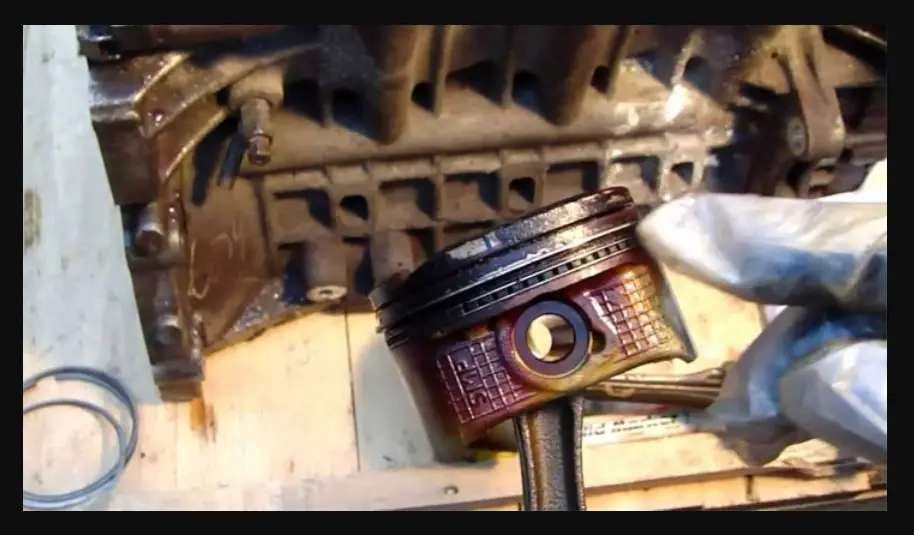
Risks of Driving With Bad Valve Seals
Driving with bad valve seals poses significant risks to your engine. Increased engine wear is one of the primary concerns, as the oil burning can damage crucial internal components like pistons and cylinders.
Additionally, the unburned oil can clog and damage the catalytic converter, leading to emission issues and potential failure of emissions tests.
In severe cases, lack of lubrication can even cause the engine to seize up completely, resulting in costly repairs and potential breakdowns.
Increased Engine Wear
What are the risks associated with driving with bad valve seals in terms of increased engine wear?
- Causes and prevention: Leaky valve seals can be caused by wear and tear over time, poor maintenance practices, or using low-quality engine oil. Regular oil changes, using high-quality oil, and proper maintenance can help prevent valve seal damage.
- Consequences of neglecting: Ignoring bad valve seals can lead to increased engine wear. The oil burning in the cylinders can cause damage to pistons, cylinders, and other internal components. This can result in reduced engine performance, decreased fuel efficiency, and costly repairs.
- Signs of increased wear: Symptoms of increased engine wear include excessive oil consumption, blue smoke from the exhaust, rough idle or misfiring, and engine knocking.
- Impact on performance: Bad valve seals can affect engine performance by compromising combustion efficiency, leading to reduced power, rough running, and decreased acceleration.
- Long-term effects: Neglecting bad valve seals can result in severe engine damage, including engine seizure, where the lack of lubrication causes the engine to lock up completely. This can be a catastrophic failure, requiring an expensive engine rebuild or replacement.
To prevent these risks and maintain your engine’s longevity, it’s crucial to address bad valve seals promptly by seeking professional diagnosis and repair.
Catalytic Converter Damage
To further understand the risks of driving with bad valve seals, it’s crucial to consider the potential damage that can occur to the catalytic converter.
When valve seals are faulty, they can lead to oil buildup in the engine. This unburned oil can then find its way into the catalytic converter, causing clogging and damage.
A damaged catalytic converter can result in emission issues, potentially leading to failed emissions tests. If the converter becomes severely damaged, it may require replacement, which can be costly.
It’s essential to address bad valve seals early on to prevent this damage from occurring. By seeking early intervention and repairing the valve seals, you can avoid the need for catalytic converter replacement, minimize emission problems, and prevent further engine damage.
Engine Seizure
Engine seizure is a potentially catastrophic consequence of driving with bad valve seals. It’s important to understand the causes, signs, prevention, consequences, and repair costs associated with engine seizure.
Here is a breakdown:
- Causes of engine seizure:
- Lack of lubrication: Leaking valve seals can lead to oil loss, resulting in insufficient lubrication for the engine components.
- Overheating: If the engine isn’t properly cooled, it can cause the metal parts to expand and seize up.
- Contaminated oil: Dirty or contaminated oil can hinder proper lubrication and cause engine seizure.
- Signs of impending engine seizure:
- Engine overheating: Frequent overheating can be a warning sign of potential engine seizure.
- Excessive smoke from the exhaust: This can indicate oil burning and potential engine damage.
- Loss of power: A sudden loss of power or difficulty in acceleration can be a sign of impending engine seizure.
- Prevention of engine seizure:
- Regular maintenance: Regularly check and change the oil and ensure proper coolant levels to prevent overheating.
- Timely repairs: Address any issues with valve seals promptly to prevent oil loss and subsequent engine seizure.
- Consequences of engine seizure:
- Complete engine failure: Engine seizure can render the engine inoperable, requiring a complete replacement.
- Expensive repairs: Repairing a seized engine can be costly, as it may involve replacing damaged components or the entire engine.
- Engine seizure repair costs:
- The cost of repairing a seized engine can vary depending on the extent of the damage and the type of vehicle. Generally, it can range from a few thousand dollars to tens of thousands of dollars.
To avoid the devastating consequences and high repair costs associated with engine seizure, it’s crucial to address any issues with bad valve seals promptly and ensure regular maintenance of your vehicle.
Recommendation
For optimal vehicle performance and to prevent further damage, it’s crucial to promptly address the issue of bad valve seals by taking your car to a qualified mechanic.
Ignoring this problem can lead to increased engine wear, catalytic converter damage, and even engine seizure.
Leaking valve seals can cause excessive oil consumption, blue smoke from the exhaust, rough idle, and engine knocking.
While it’s impossible to determine exactly how long you can drive with bad valve seals, it’s recommended to address the issue as soon as possible to avoid costly repairs and potential breakdowns.
Attempting DIY valve seal replacement isn’t advisable, as it requires technical expertise and specialized tools.
Regular maintenance, including oil changes and inspections, can help prevent valve seal damage.
Trusting a professional mechanic for diagnosis and repair is the best course of action to ensure your vehicle’s longevity and performance.
Some related FAQs.
Is leak sealer a permanent fix?
It is frequently recommended as a cheap and simple fix by plumbers and even large national boiler maintenance companies. However, even if the sealant does work, it usually only provides a short-term solution. It functions somewhat like a sticking plaster that will eventually come off, causing the leak to reappear.
Can valve seals cause smoke?
The top of the valve cover’s head will retain some leftover oil if a car sits for a long time or over night. The next time you drive, the oil becomes stuck down at the faulty seal and emits blue smoke.

